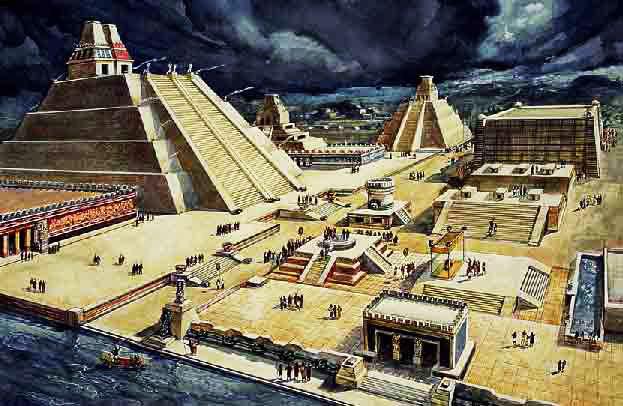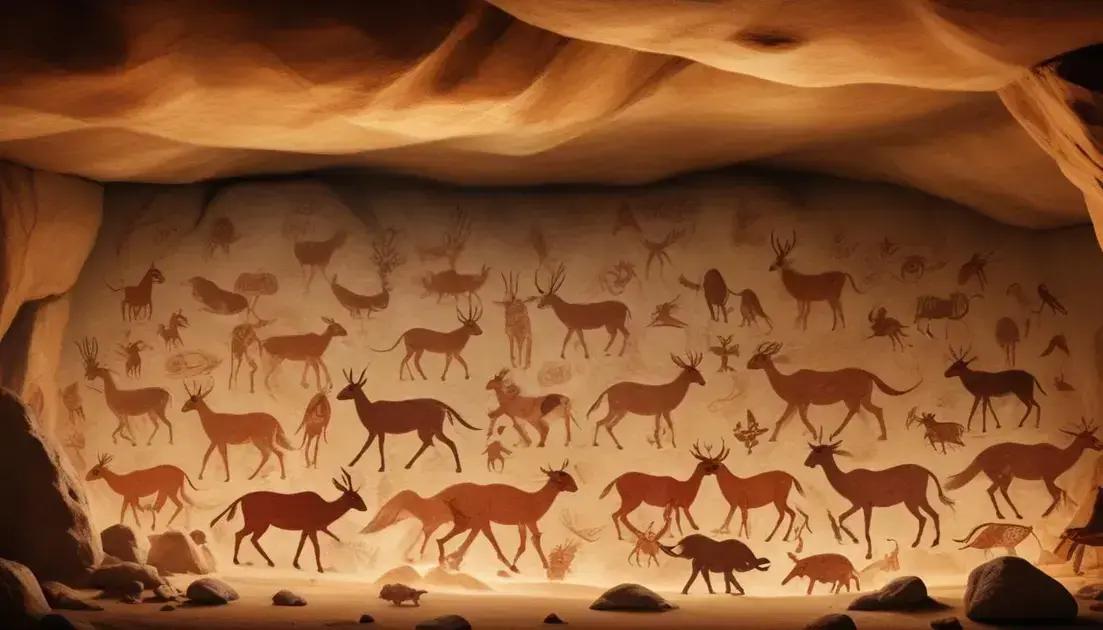
The Rise of the Aztec Empire and Its Dramatic Fall
The Aztec Empire, a civilization that flourished in Mesoamerica (modern-day Mexico) during the 15th and early 16th centuries, stands as a testament to human ingenuity, ambition, and the unpredictable nature of power. From its humble beginnings as a nomadic tribe to its ascension as a dominant force in the region, the Aztec Empire’s story is one of remarkable achievement, brutal conquest, and ultimately, a dramatic and tragic demise at the hands of Spanish conquistadors. This detailed exploration delves into the intricacies of Aztec society, their rise to power, their remarkable accomplishments in various fields, and the confluence of factors that led to their swift and devastating downfall. The legacy of the Aztecs continues to resonate in modern Mexico and beyond, shaping our understanding of pre-Columbian civilizations and the enduring impact of cultural exchange, conflict, and the enduring power of history.
The Mexica: From Nomadic Tribe to Imperial Power
The Aztecs, also known as the Mexica, weren’t indigenous to the Valley of Mexico. Their origins trace back to a northern region, likely Aztlán, a legendary place whose precise location remains a subject of scholarly debate. By the 13th century, they had begun their southward migration, establishing themselves in various locations before settling in the Valley of Mexico. Their initial arrival wasn’t marked by immediate dominance; rather, they were a relatively minor group amongst a constellation of established city-states.
The Mexica’s rise to power wasn’t due to superior numbers or inherent military might, but rather a shrewd combination of strategic alliances, tactical brilliance, and opportunistic exploitation of existing power vacuums. Their initial settlements were often characterized by a precarious existence, facing rejection and hostility from neighboring groups. However, their skilled warriors, adept at both conventional and unconventional warfare, gradually carved out a niche for themselves. The Mexica weren’t hesitant to use subterfuge and alliances to achieve their goals, often playing rival factions against each other to gain an advantage.
A crucial turning point in their trajectory was the formation of a triple alliance in 1428 with the city-states of Texcoco and Tlacopan. This alliance, far from being an equal partnership, saw the Mexica steadily asserting their dominance. The strategic location of Tenochtitlán, their capital city, built on an island in Lake Texcoco, provided a natural defensive advantage. This island fortress, initially a modest settlement, grew exponentially into a sprawling metropolis, a testament to the Mexica’s engineering prowess and their ability to harness the resources of their environment. The chinampas, artificial islands created from woven reeds and mud, allowed for intensive agriculture, sustaining a burgeoning population that would eventually swell to hundreds of thousands.
The Flourishing of Tenochtitlán: A Metropolis of Canals and Temples
Tenochtitlán, the heart of the Aztec Empire, wasn’t merely a military stronghold; it was a sophisticated urban center, a marvel of engineering and planning. The city’s layout, organized around a system of canals and causeways, facilitated trade and transportation. Aqueducts brought fresh water from springs and hillsides, providing a reliable water supply for the growing population. Monumental architecture dominated the cityscape, with towering temples dedicated to various deities, palaces for the elite, and extensive marketplaces bustling with activity.
The temples, constructed from stone and adorned with intricate carvings and vibrant murals, were not only religious centers but also served as astronomical observatories. The Aztecs possessed a deep understanding of celestial movements, their calendar system reflecting a sophisticated grasp of astronomy. This knowledge was crucial for agricultural planning, religious rituals, and the overall organization of Aztec society. The city’s marketplaces were hubs of economic exchange, where goods from across the empire and beyond were traded, underscoring the vast reach and economic power of the Aztec Empire. The markets were not only places for buying and selling; they were social centers, reflecting the diversity and vibrancy of Aztec life.
Expansion and Control: The Tributary System and Military Prowess
The Aztec Empire’s expansion wasn’t solely driven by conquest, although military prowess played a vital role. The empire’s growth relied on a sophisticated system of tribute, a complex network of relationships between the central power in Tenochtitlán and its subject provinces. Conquered territories were expected to provide regular payments in the form of goods, labor, or even human sacrifices.
The Aztec military was highly organized and effective, composed of various specialized units, each with its own role and function. Their warriors were renowned for their ferocity and skill in combat. Their weaponry, consisting of spears, clubs, obsidian-bladed swords, and atlatls (spear-throwers), was both effective and intimidating. The capture of prisoners was a significant aspect of Aztec warfare, not only as a source of labor but also for the practice of ritual sacrifice. These sacrifices, while gruesome from a modern perspective, were deeply ingrained in Aztec religious beliefs and served to maintain cosmic order, according to their cosmology.
The Reign of Moctezuma II: A Time of Prosperity and Foreshadowing
Moctezuma II’s reign (1502-1520) is often considered the zenith of Aztec power and prosperity. During his tenure, the empire reached its greatest territorial extent, boasting a vast and diverse population. Tenochtitlán flourished under his rule, witnessing further expansion and embellishment. However, this period also sowed the seeds of the empire’s eventual downfall. Moctezuma’s reign was characterized by both impressive achievements and growing internal tensions.
While Moctezuma II presided over a period of economic growth and cultural flourishing, his reign was also marked by a growing sense of unease and resentment amongst some subject peoples. The heavy burden of tribute, coupled with the demanding nature of Aztec religious practices, created a simmering discontent that would be exploited by the Spanish conquistadors. Furthermore, Moctezuma’s decision-making, often characterized by indecisiveness and a reluctance to engage in decisive military action, ultimately hampered the Aztec response to the Spanish threat.
The Arrival of Cortés and the Collapse of an Empire
The arrival of Hernán Cortés and his small band of Spanish conquistadors in 1519 marked a turning point in Aztec history, a moment that would irrevocably alter the course of the empire. Initially greeted with a mixture of curiosity and apprehension, Cortés was astute enough to exploit existing tensions within the Aztec Empire. He forged alliances with rival factions, particularly those who resented Aztec dominance, significantly bolstering his comparatively small force.
The success of the Spanish conquest wasn’t solely due to superior military technology. Several factors contributed to the Aztec defeat: disease played a devastating role, decimating the native population and weakening their resistance. Smallpox, measles, and other Old World diseases to which the Aztecs had no immunity, wreaked havoc, undermining their capacity to effectively fight back against the Spanish invaders. Internal divisions within the Aztec Empire, coupled with the ambiguous and often hesitant actions of Moctezuma II, further weakened their defense against the Spanish onslaught. Cortés’s shrewd manipulation of existing rivalries and his exploitation of native anxieties significantly undermined the Aztecs’ ability to mount a unified and effective defense.
The siege and eventual fall of Tenochtitlán in 1521 marked the end of the Aztec Empire. The once-magnificent city was razed, its temples destroyed, and its inhabitants subjected to brutal subjugation under Spanish rule. The conquest was a tragic and violent event, a turning point not only for the Aztec people but also for the entire continent of North America.
The Enduring Legacy: A Civilization’s Enduring Influence
Despite its dramatic fall, the Aztec Empire left an indelible mark on history. Their advancements in agriculture, particularly the ingenious chinampa system, showcased their ingenuity in harnessing their environment. Their calendar system, remarkably accurate, reflected their sophisticated understanding of astronomy and mathematics. Their artistic achievements, encompassing intricate carvings, vibrant murals, and exquisite craftsmanship, testify to their creative talents. Their complex social and political structures, even with their inherent inequalities, showcased a high level of organizational skill.
The Aztec legacy extends beyond material achievements; their mythology and religious beliefs continue to fascinate and inspire. Their pantheon of gods and goddesses, their intricate cosmology, and their rich oral traditions offer a window into a complex and vibrant worldview. Many aspects of Aztec culture have been absorbed into modern Mexican identity, a testament to the enduring resilience and impact of this once-dominant civilization.
The study of the Aztec Empire offers valuable insights into the complexities of power, the dynamics of conquest, and the devastating effects of disease and cultural clash. It serves as a powerful reminder of the fragility of even the most powerful empires and the importance of understanding the interplay of internal and external factors that shape the rise and fall of civilizations. The Aztecs, despite their tragic end, remain a compelling case study for understanding the complexities of human history and the enduring impact of a lost empire.


